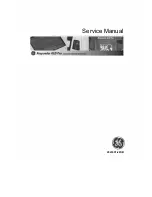
Electromagnetic Compatibility Guidelines
This product was tested and complies with the regulatory requirements and limits for
electromagnetic compatibility (EMC) stated in the product specifications. These requirements
and limits provide reasonable protection against harmful interference when the product is
operated in the intended operational electromagnetic environment.
This product is intended for use in industrial locations. However, harmful interference may
occur in some installations, when the product is connected to a peripheral device or test object,
or if the product is used in residential or commercial areas. To minimize interference with
radio and television reception and prevent unacceptable performance degradation, install and
use this product in strict accordance with the instructions in the product documentation.
Furthermore, any changes or modifications to the product not expressly approved by National
Instruments could void your authority to operate it under your local regulatory rules.
Caution
To ensure the specified EMC performance, operate this product only with
shielded cables and accessories.
Caution
To ensure the specified EMC performance, the length of all I/O cables
must be no longer than 3 m (10 ft).
Safety Guidelines for Hazardous Voltages
If hazardous voltages are connected to the device, take the following precautions. A hazardous
voltage is a voltage greater than 42.4 Vpk voltage or 60 VDC to earth ground.
Caution
This module is rated for Measurement Category I. It is intended to carry
signal voltages no greater than 250 V. This module can withstand up to 500 V
impulse voltage. Do not use this module for connection to signals or for
measurements within Categories II, III, or IV. Do not connect to MAINS supply
circuits (for example, wall outlets) of 115 VAC or 230 VAC.
Caution
Isolation voltage ratings apply to the voltage measured between any
channel pin and the chassis ground. When operating channels in series or floating on
top of external voltage references, ensure that no terminal exceeds this rating.
Verifying the System Requirements
To use the NI-DCPower instrument driver, your system must meet certain requirements.
Refer to the product readme, which is available on the driver software media or online at
, for more information about minimum system requirements,
recommended system, and supported application development environments (ADEs).
2
|
ni.com
|
NI PXIe-4136/4137 Getting Started Guide


































